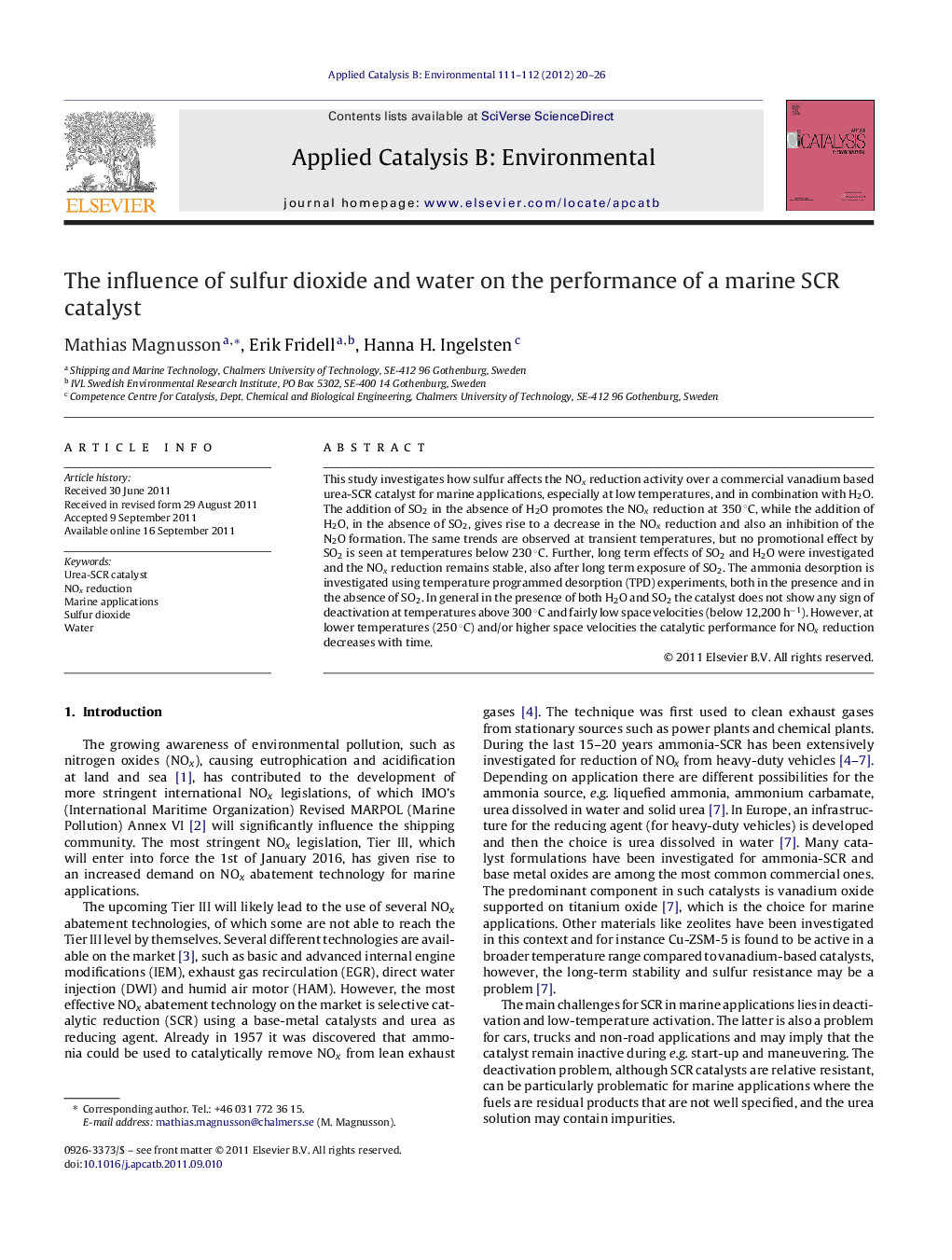| Article ID | Journal | Published Year | Pages | File Type |
|---|---|---|---|---|
| 46445 | Applied Catalysis B: Environmental | 2012 | 7 Pages |
This study investigates how sulfur affects the NOx reduction activity over a commercial vanadium based urea-SCR catalyst for marine applications, especially at low temperatures, and in combination with H2O. The addition of SO2 in the absence of H2O promotes the NOx reduction at 350 °C, while the addition of H2O, in the absence of SO2, gives rise to a decrease in the NOx reduction and also an inhibition of the N2O formation. The same trends are observed at transient temperatures, but no promotional effect by SO2 is seen at temperatures below 230 °C. Further, long term effects of SO2 and H2O were investigated and the NOx reduction remains stable, also after long term exposure of SO2. The ammonia desorption is investigated using temperature programmed desorption (TPD) experiments, both in the presence and in the absence of SO2. In general in the presence of both H2O and SO2 the catalyst does not show any sign of deactivation at temperatures above 300 °C and fairly low space velocities (below 12,200 h−1). However, at lower temperatures (250 °C) and/or higher space velocities the catalytic performance for NOx reduction decreases with time.
Graphical abstractFigure optionsDownload full-size imageDownload as PowerPoint slideHighlights► Investigates the influence of SO2 and H2O on the performance of a marine SCR catalyst. ► SO2, in the absence of H2O, promotes NOx reduction, NH3 conversion and N2O formation. ► H2O, in the absence of SO2, decreases NOx reduction and inhibits N2O formation. ► In the presence of both SO2 and H2O the activity for NOx reduction decreases.
